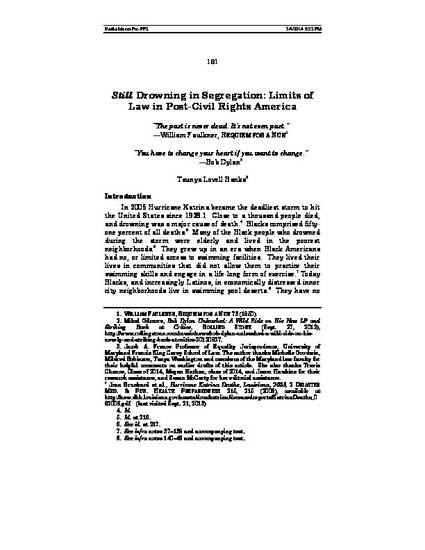
- civil rights,
- public health,
- legal history,
- law & society
Approximately 40% of the deaths attributed to Hurricane Katrina in 2005 were caused by drowning. Blacks in the New Orleans area accounted for slightly more than one half of all deaths. Some of the drowning deaths were preventable. Too many black Americans do not know how to swim. Up to seventy percent of all black children in the United States have no or low ability to swim. Thus it is unsurprising that black youth between 5 and 19 are more likely to drown than white youths of the same age. The Centers for Disease Control concludes that a major factor explaining the difference in black and white drowning rates is the lack of swimming facilities for black youth. From the beginning of the swimming pool movement in the early 20th century blacks had unequal access to these facilities, but the situation worsened in the 1950s and 1960s when efforts to integrate public pools resulted in wide-spread pool closures throughout the United States. Litigants relied on a variety of legal theories to gain access to public pools but the courts, including the Supreme Court, consistently ruled that local governments could close pools rather than operate them on an integrated basis. This article explains why the civil rights approach to swimming pool equality failed and argues that, given the established health benefits of swimming as an exercise, and how the lack of exercise opportunities is related to the growing obesity problems for which black communities are disproportionately at risk, any effort to achieve swimming pool equality should adopt a public health rather than a civil rights approach to remedy this problem.
